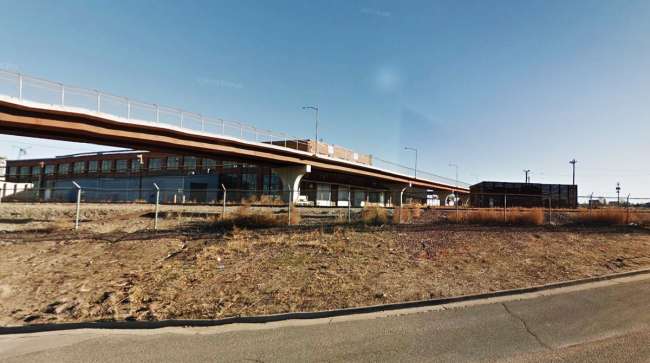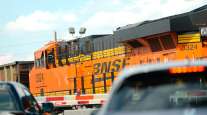Staff Reporter
Colorado DOT Eyes Defunct Burnham Yard in Denver

[Stay on top of transportation news: Get TTNews in your inbox.]
The Colorado Department of Transportation is planning to acquire a parcel of land in Denver that could create opportunities for infrastructure improvements.
The parcel is Union Pacific’s Burnham Yard, a 61-acre plot just south of downtown Denver that served as a repair shop before shuttering in February 2016.
CDOT spokesman Matt Inzeo explained the area near Burnham Yard constricts Interstate 25, the primary north-south route through Denver.

Inzeo
Inzeo said the agency identified the property’s potential to improve transportation options years ago and had examined the land with a Planning and Environmental Linkages approach. PEL considers environmental, economic and community needs early in the planning process.
WANT MORE NEWS? Listen to today's Daily Briefing
CDOT responded to Union Pacific’s request for proposal regarding the property and has entered into “active discussions” with the rail company, according to Inzeo.
Union Pacific spokeswoman Kristen South confirmed the company has received a handful of offers concerning Burnham Yard.
“We are currently in the process of reviewing those proposals,” South said.
A key portion of I-25 that runs through the city is wedged between the South Platte River immediately to the west and a consolidated mainline railroad to the east. Inzeo said the acquisition of the Burnham Yard parcel could allow the agency to make infrastructure adjustments and improve I-25.
According to CDOT, this stretch of I-25 has an annual average daily traffic count of 250,000 vehicles. That figure is expected to climb to 300,000 vehicles by 2040.
“Like a lot of interstates that cut through the heart of cities, [there are] obviously a lot of physical constraints,” Inzeo said. “This is just a very physically constrained area that we spend a lot of time thinking about because it has tremendous volumes.”
I-25 is important for Colorado. Snaking from Las Cruces, N.M., to Buffalo, Wyo., it serves as Colorado’s only north-south interstate.
CDOT Burnham Yard Memo by Transport Topics on Scribd
Inzeo said that, if the deal goes through, the additional land would allow CDOT to potentially move the consolidated mainline railroad tracks into the Burnham Yard space, further away from I-25. Shifting the mainline would push the tracks so that they run parallel to Regional Transportation District trains through Burnham Yard, giving CDOT flexibility for expanding I-25 away from the river.
Inzeo also said there could be opportunities to construct grade-separated rail crossings to improve safety and mobility. Grade separation involves designing junctions at different heights so as not to disrupt the flow of traffic.
Currently, Inzeo said the tracks have a number of at-grade crossings with some major Denver streets.
“This offers a huge opportunity to change that built environment in a way that solves a lot of problems simultaneously,” Inzeo said. “With the rail line no longer pinning the highway in, you then at least can start to talk about what your options are on I-25.”
CDOT has outlined a few potential improvement plans for I-25 that involve strategies other than shifting the consolidated mainline. One option is to realign I-25 by splitting the corridor so it straddles the South Platte River. Northbound traffic would use the existing capacity; southbound traffic would be moved to a new stretch of road across the river. CDOT also presents an option to construct a multilevel highway, which would require a complex design in which five lanes of southbound traffic travel above five lanes of northbound traffic.
Inzeo said CDOT and Union Pacific are continuing conversations about the parcel. He anticipates a formal acquisition may happen at the beginning of next year.
“At a minimum, you’re getting yourself the optionality to make improvements and doing so in a more flexible way,” Inzeo said, calling I-25 the “spine of Colorado’s highway system.”




